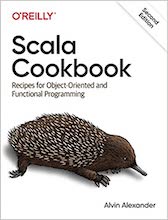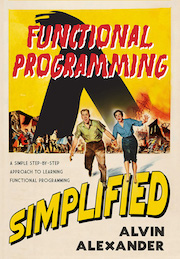Java example source code file (geometry.xml)
The geometry.xml Java example source code
<?xml version="1.0"?>
<!--
Licensed to the Apache Software Foundation (ASF) under one or more
contributor license agreements. See the NOTICE file distributed with
this work for additional information regarding copyright ownership.
The ASF licenses this file to You under the Apache License, Version 2.0
(the "License"); you may not use this file except in compliance with
the License. You may obtain a copy of the License at
http://www.apache.org/licenses/LICENSE-2.0
Unless required by applicable law or agreed to in writing, software
distributed under the License is distributed on an "AS IS" BASIS,
WITHOUT WARRANTIES OR CONDITIONS OF ANY KIND, either express or implied.
See the License for the specific language governing permissions and
limitations under the License.
-->
<?xml-stylesheet type="text/xsl" href="./xdoc.xsl"?>
<document url="geometry.html">
<properties>
<title>The Commons Math User Guide - Geometry
</properties>
<body>
<section name="11 Geometry">
<subsection name="11.1 Overview" href="overview">
<p>
The geometry package provides classes useful for many physical simulations
in Euclidean spaces, like vectors and rotations in 3D, as well as on the
sphere. It also provides a general implementation of Binary Space Partitioning
Trees (BSP trees).
</p>
<p>
All supported type of spaces (Euclidean 3D, Euclidean 2D, Euclidean 1D, 2-Sphere
and 1-Sphere) provide dedicated classes that represent complex regions of the
space as shown in the following table:
</p>
<p>
<table border="1" align="center">
<tr BGCOLOR="#CCCCFF"> | Space | Region | <tr>Euclidean 1D | IntervalsSet | <tr>Euclidean 2D | PolygonsSet | <tr>Euclidean 3D | PolyhedronsSet | <tr>1-Sphere | ArcsSet | <tr>2-Sphere | SphericalPolygonsSet | </table> </p> <p> All these regions share common features. Regions can be defined from several non-connected parts. As an example, one PolygonsSet instance in Euclidean 2D (i.e. the plane) can represent a region composed of several separated polygons separate from each other. They also support regions containing holes. As an example a SphericalPolygonsSet on the 2-Sphere can represent a land mass on the Earth with an interior sea, where points on this sea would not be considered to belong to the land mass. Of course more complex models can also be represented and it is possible to define for example one region composed of several continents, with interior sea containing separate islands, some of which having lakes, which may have smaller island ... In the infinite Euclidean spaces, regions can have infinite parts. for example in 1D (i.e. along a line), one can define an interval starting at abscissa 3 and extending up to infinity. This is also possible in 2D and 3D. For all spaces, regions without any boundaries are also possible so one can define the whole space or the empty region. </p> <p> The classical set operations are available in all cases: union, intersection, symmetric difference (exclusive or), difference, complement. There are also region predicates (point inside/outside/on boundary, emptiness, other region contained). Some geometric properties like size, or boundary size can be computed, as well as barycenters on the Euclidean space. Another important feature available for all these regions is the projection of a point to the closest region boundary (if there is a boundary). The projection provides both the projected point and the signed distance between the point and its projection, with the convention distance to boundary is considered negative if the point is inside the region, positive if the point is outside the region and of course 0 if the point is already on the boundary. This feature can be used for example as the value of a function in a root solver to determine when a moving point crosses the region boundary. </p> </subsection> <subsection name="11.2 Euclidean spaces" href="euclidean"> <p> <a href="../apidocs/org/apache/commons/math3/geometry/euclidean/oned/Vector1D.html"> Vector1D</a>, Vector2D</a> and Vector3D</a> provide simple vector types. One important feature is that instances of these classes are guaranteed to be immutable, this greatly simplifies modeling dynamical systems with changing states: once a vector has been computed, a reference to it is known to preserve its state as long as the reference itself is preserved. </p> <p> Numerous constructors are available to create vectors. In addition to the straightforward Cartesian coordinates constructor, a constructor using azimuthal coordinates can build normalized vectors and linear constructors from one, two, three or four base vectors are also available. Constants have been defined for the most commons vectors (plus and minus canonical axes, null vector, and special vectors with infinite or NaN coordinates). </p> <p> The generic vectorial space operations are available including dot product, normalization, orthogonal vector finding and angular separation computation which have a specific meaning in 3D. The 3D geometry specific cross product is of course also implemented. </p> <p> <a href="../apidocs/org/apache/commons/math3/geometry/euclidean/oned/Vector1DFormat.html"> Vector1DFormat</a>, Vector2DFormat</a> and Vector3DFormat</a> are specialized classes for formatting output or parsing input with text representation of vectors. </p> <p> <a href="../apidocs/org/apache/commons/math3/geometry/euclidean/threed/Rotation.html"> Rotation</a> represents 3D rotations. Rotation instances are also immutable objects, as Vector3D instances. </p> <p> Rotations can be represented by several different mathematical entities (matrices, axe and angle, Cardan or Euler angles, quaternions). This class presents a higher level abstraction, more user-oriented and hiding implementation details. Well, for the curious, we use quaternions for the internal representation. The user can build a rotation from any of these representations, and any of these representations can be retrieved from a <code>Rotation instance (see the various constructors and getters). In addition, a rotation can also be built implicitly from a set of vectors and their image. </p> <p> This implies that this class can be used to convert from one representation to another one. For example, converting a rotation matrix into a set of Cardan angles can be done using the following single line of code: </p> <source>double[] angles = new Rotation(matrix, 1.0e-10).getAngles(RotationOrder.XYZ, RotationConvention.FRAME_TRANSFORM); <p> Focus is oriented on what a rotation <em>does rather than on its underlying representation. Once it has been built, and regardless of its internal representation, a rotation is an <em>operator which basically transforms three dimensional vectors into other three dimensional vectors. Depending on the application, the meaning of these vectors may vary as well as the semantics of the rotation. </p> <p> For example in a spacecraft attitude simulation tool, users will often consider the vectors are fixed (say the Earth direction for example) and the rotation transforms the coordinates coordinates of this vector in inertial frame into the coordinates of the same vector in satellite frame. In this case, the rotation implicitly defines the relation between the two frames (we have fixed vectors and moving frame). Another example could be a telescope control application, where the rotation would transform the sighting direction at rest into the desired observing direction when the telescope is pointed towards an object of interest. In this case the rotation transforms the direction at rest in a topocentric frame into the sighting direction in the same topocentric frame (we have moving vectors in fixed frame). In many case, both approaches will be combined, in our telescope example, we will probably also need to transform the observing direction in the topocentric frame into the observing direction in inertial frame taking into account the observatory location and the Earth rotation. </p> <p> In order to support naturally both views, the enumerate RotationConvention has been introduced in version 3.6. This enumerate can take two values: <code>VECTOR_OPERATOR or
 The search page
The search page Other Java source code examples at this package level
Other Java source code examples at this package level Click here to learn more about this project
Click here to learn more about this project
